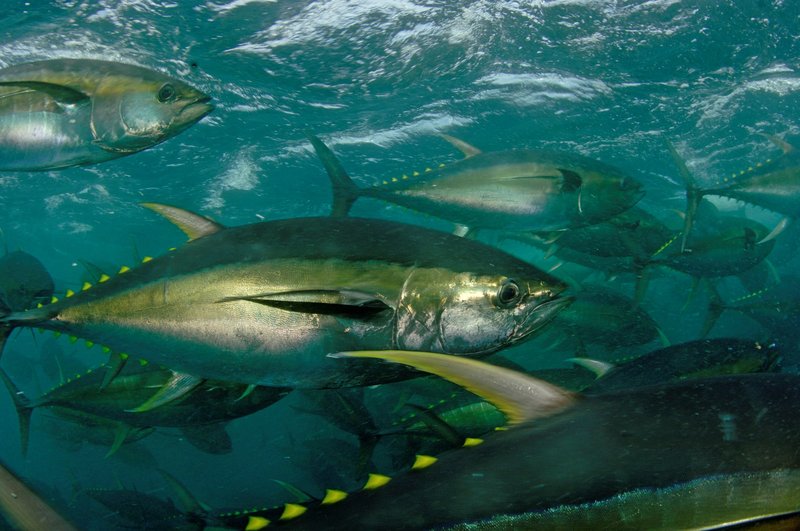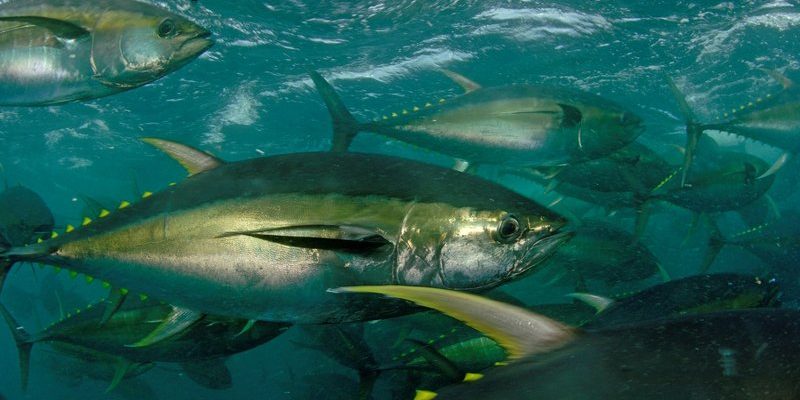
Let’s dive into the world of tunas and explore their habitats. Imagine the vast blue ocean as a giant playground for these fish. They swim between warm currents and colder waters, always on the move. But surprisingly, they don’t just stop in the ocean—they have been known to venture into different bodies of water, making their home a little more versatile than you might think.
In this article, we’ll journey through the oceans, rivers, and various habitats where tunas thrive. So grab that cup of coffee, and let’s chat about these amazing fish and their aquatic home!
Understanding Tuna Habitats
Tunas are primarily found in the open ocean, and they thrive in regions where temperatures are warm. Think of them as the busy city dwellers of the sea, constantly on the move rather than settling down in one cozy spot. There are different species of tunas, like the bluefin, yellowfin, and albacore, and each has its preferred habitats.
Most tunas prefer temperate and tropical waters. They’re often found in the Atlantic Ocean, Pacific Ocean, and Indian Ocean. Interestingly, while they do enjoy warmer waters, some species, like the Pacific bluefin tuna, can swim in cooler areas as well. This adaptability allows them to explore various depths and regions, hunting for their favorite prey—smaller fish and squid.
The Importance of Ocean Currents
Ocean currents play a significant role in shaping tuna habitats. These currents are like highways in the ocean, carrying warm and cold water and creating different environments. Tunas often follow these currents to chase after food or to find breeding grounds.
For instance, during spawning season, some tuna species will travel long distances to warmer waters. This means that where you find tunas can change seasonally as they migrate. They follow the fish they eat, so predictability is key to their survival in the vast ocean.
Regions Where Tunas Are Found
Let’s break down some specific regions where you can commonly find tunas.
- Atlantic Ocean: This is home to the highly sought-after bluefin tuna. They swim from the Gulf of Mexico up to the North Atlantic, often congregating around the Mediterranean Sea.
- Pacific Ocean: Here, you’ll find yellowfin tuna and albacore tuna. They thrive in warm waters near various islands, especially during certain seasons.
- Indian Ocean: Often less explored, this ocean has a diverse tuna population, with species like skipjack tuna flourishing in its warm currents.
Each of these regions has unique conditions that support various tuna species. For example, the Atlantic Ocean is not only rich in nutrients but also has the right mix of warm and cooler waters that attract spawning tunas.
Coastal vs. Open Ocean Habitats
You might wonder if tunas are only found in the deep ocean or if they venture closer to shore. Here’s the thing: while tunas usually prefer open waters, some species do move closer to coastal areas, especially when hunting. They may be spotted near reefs or inlets where food is abundant.
In these coastal habitats, tunas are often found alongside other fish. This means that while they’re usually the big shots in the open sea, they can play in the shallower waters too. It’s like seeing the CEO of a company dining with employees at a local café—they can adapt to various settings as needed.
Freshwater Habitats: A Rare Sight
You might be surprised to learn that tunas are primarily saltwater fish. However, there have been rare instances of them venturing into freshwater rivers. While it’s not common, some juvenile tunas have been spotted in brackish waters, which is a mix of salt and fresh water.
These occurrences are exceptional and typically happen during their early life stages. As they grow, they tend to migrate back to the ocean where they can thrive in the saltier waters. Occasionally, environmental changes or food scarcity can lead tunas to explore new territories.
The Challenges of Adaptation
This adaptability presents challenges. Tunas are built for the vastness of the ocean, and their bodies are specially designed for saltwater environments. When they stray into freshwater, they face the risk of dehydration and stress. Thus, while it’s fascinating that they can venture into rivers and lakes, it’s quite rare and usually not sustainable for their long-term health.
Conservation and Habitat Threats
As we explore where tunas are found, it’s crucial to talk about their conservation. Overfishing and habitat destruction pose significant challenges to tunas around the world. Most tuna species are vulnerable or endangered due to high demand in the fishing industry, especially for sushi and sashimi.
Environmental changes, like rising sea temperatures and ocean acidification, further threaten their habitats. These factors can disrupt their breeding and feeding patterns, impacting their populations significantly.
Efforts for Protection
Many organizations are working to protect tuna habitats by promoting sustainable fishing practices and creating marine protected areas. These efforts aim to support the regeneration of tuna populations and ensure that future generations can enjoy these magnificent fish.
Public awareness is also essential in conservation efforts. By choosing sustainably sourced seafood and supporting responsible fishing practices, you can contribute to the protection of tunas’ natural habitats.
In Conclusion
So where are tunas found? They roam the vast oceans, adapting to various habitats and sometimes even venturing inland to freshwater areas, albeit rarely. From the rich waters of the Atlantic to the warm currents of the Pacific, these fish embody the spirit of the ocean.
As we’ve explored, understanding their habitats helps us appreciate their role in marine ecosystems. It’s a reminder of the delicate balance within our oceans and the importance of conservation. Keeping tunas safe isn’t just about preserving a fish; it’s about protecting a vital part of our ocean’s health. Next time you enjoy a tuna dish, remember the journey these amazing fish take through their watery homes!

